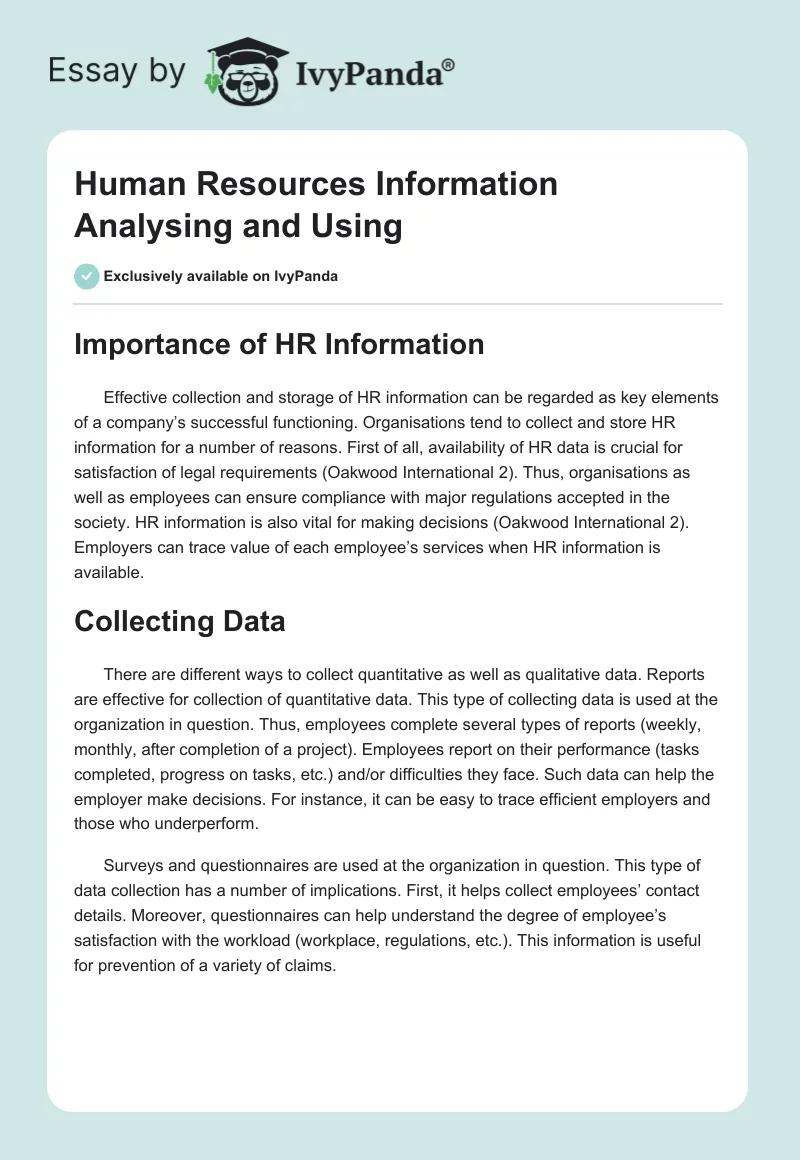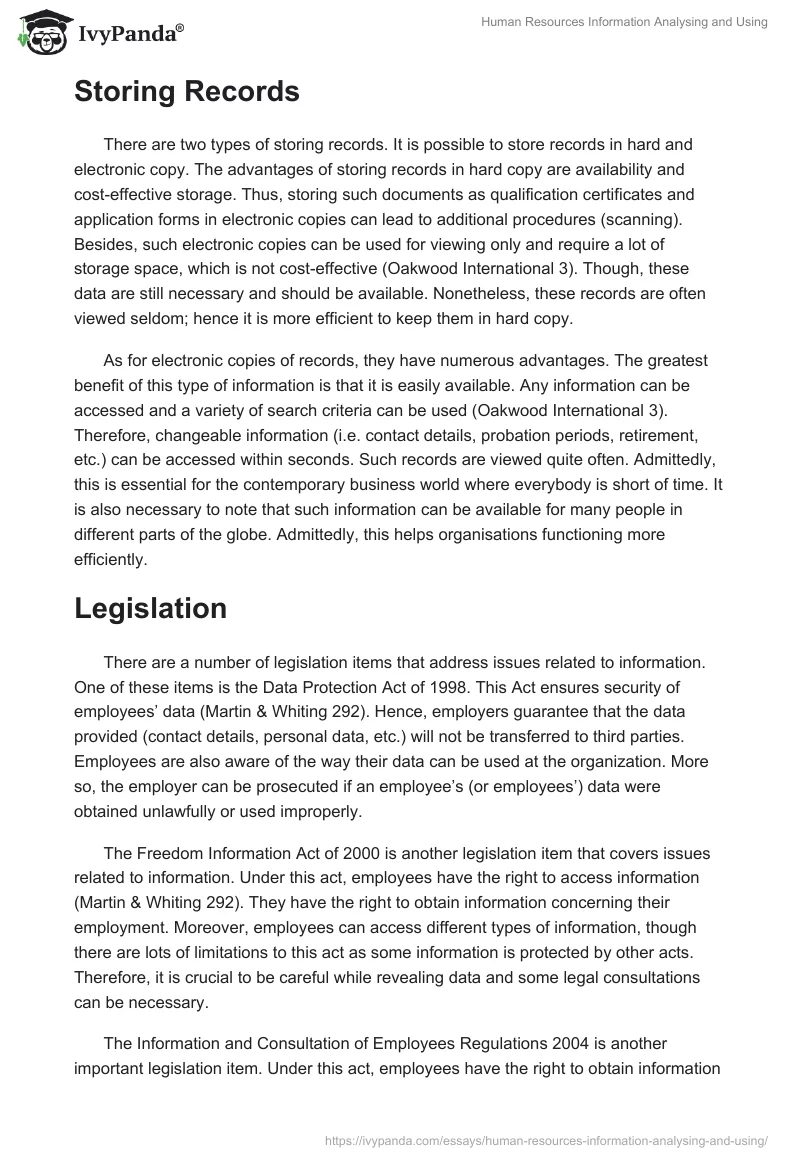Importance of HR Information
Effective collection and storage of HR information can be regarded as key elements of a company’s successful functioning. Organisations tend to collect and store HR information for a number of reasons. First of all, availability of HR data is crucial for satisfaction of legal requirements (Oakwood International 2). Thus, organisations as well as employees can ensure compliance with major regulations accepted in the society. HR information is also vital for making decisions (Oakwood International 2). Employers can trace value of each employee’s services when HR information is available.
Collecting Data
There are different ways to collect quantitative as well as qualitative data. Reports are effective for collection of quantitative data. This type of collecting data is used at the organization in question. Thus, employees complete several types of reports (weekly, monthly, after completion of a project). Employees report on their performance (tasks completed, progress on tasks, etc.) and/or difficulties they face. Such data can help the employer make decisions. For instance, it can be easy to trace efficient employers and those who underperform.
Surveys and questionnaires are used at the organization in question. This type of data collection has a number of implications. First, it helps collect employees’ contact details. Moreover, questionnaires can help understand the degree of employee’s satisfaction with the workload (workplace, regulations, etc.). This information is useful for prevention of a variety of claims.
Storing Records
There are two types of storing records. It is possible to store records in hard and electronic copy. The advantages of storing records in hard copy are availability and cost-effective storage. Thus, storing such documents as qualification certificates and application forms in electronic copies can lead to additional procedures (scanning). Besides, such electronic copies can be used for viewing only and require a lot of storage space, which is not cost-effective (Oakwood International 3). Though, these data are still necessary and should be available. Nonetheless, these records are often viewed seldom; hence it is more efficient to keep them in hard copy.
As for electronic copies of records, they have numerous advantages. The greatest benefit of this type of information is that it is easily available. Any information can be accessed and a variety of search criteria can be used (Oakwood International 3). Therefore, changeable information (i.e. contact details, probation periods, retirement, etc.) can be accessed within seconds. Such records are viewed quite often. Admittedly, this is essential for the contemporary business world where everybody is short of time. It is also necessary to note that such information can be available for many people in different parts of the globe. Admittedly, this helps organisations functioning more efficiently.
Legislation
There are a number of legislation items that address issues related to information. One of these items is the Data Protection Act of 1998. This Act ensures security of employees’ data (Martin & Whiting 292). Hence, employers guarantee that the data provided (contact details, personal data, etc.) will not be transferred to third parties. Employees are also aware of the way their data can be used at the organization. More so, the employer can be prosecuted if an employee’s (or employees’) data were obtained unlawfully or used improperly.
The Freedom Information Act of 2000 is another legislation item that covers issues related to information. Under this act, employees have the right to access information (Martin & Whiting 292). They have the right to obtain information concerning their employment. Moreover, employees can access different types of information, though there are lots of limitations to this act as some information is protected by other acts. Therefore, it is crucial to be careful while revealing data and some legal consultations can be necessary.
The Information and Consultation of Employees Regulations 2004 is another important legislation item. Under this act, employees have the right to obtain information and consultations on a variety of issues. Employees can get consultations on their rights and their obligations; they can obtain consultations on their employment.
Works Cited
Martin, Malcolm, and Fiona Whiting. Human Resource Practice. London: Chartered Institute of Personnel and Development, 2010. Print.
Oakwood International. Recording, Analysing and Using Human Resources Information. London: Oakwood International Ltd., 2010. Print.


